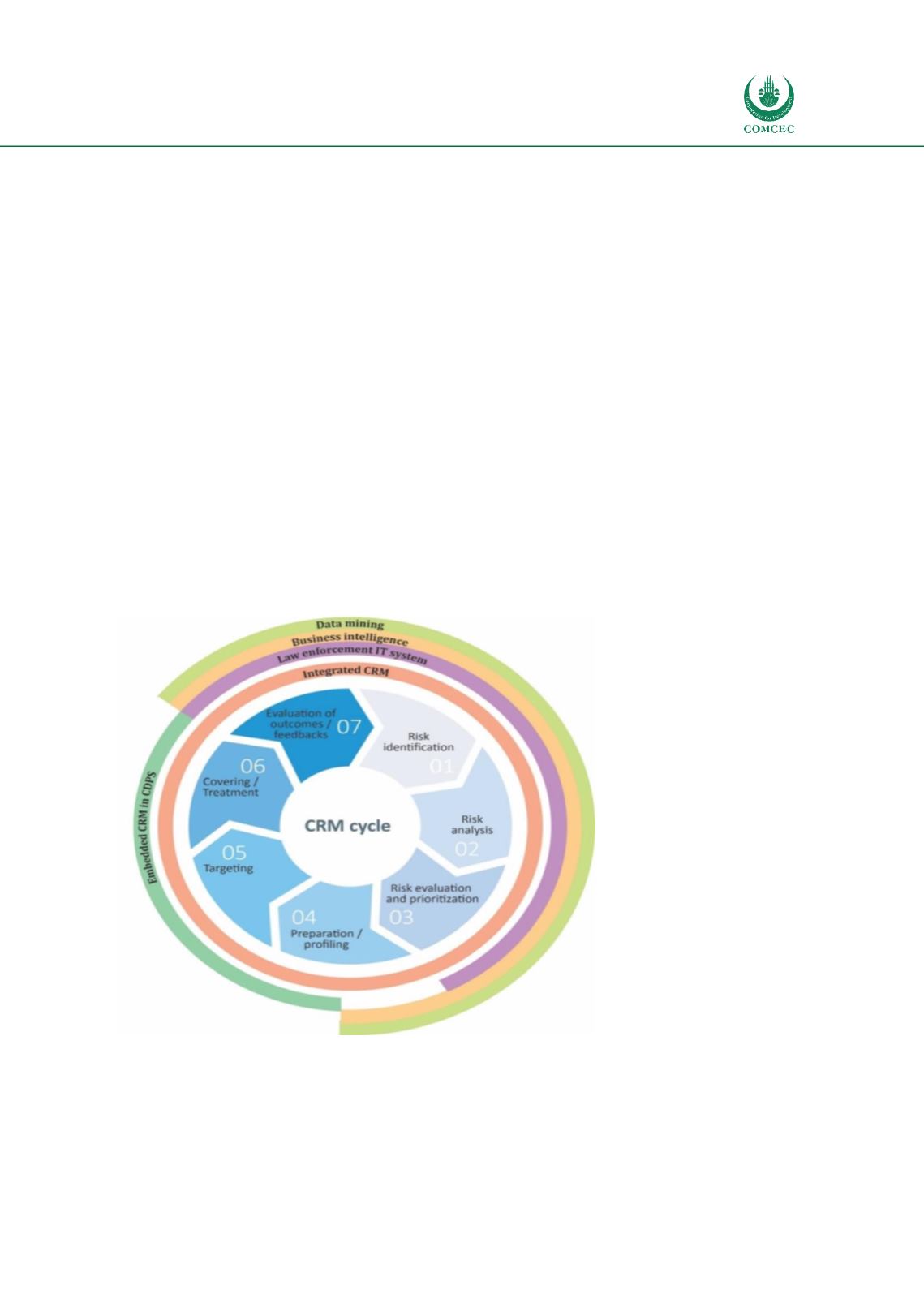

Facilitating Trade:
Improving Customs Risk Management Systems
In the OIC Member States
151
are in included in the yearly action plans and implemented according to the defined
performance indicators. This unit will make annual reviews of progress to measure the progress
of change management strategic objectives.
Policy Option 6: Definition of responsibility for monitoring the entire CRM
implementation and improvement process
;
the change management unit should measure
the readiness of the staff for CRM reforms and should develop communication strategies to
overcome the possible resistance to change. Resistance to change is to be expected in all stages
of the CRM reform process, especially having in mind that customs employees will lose many
discretionary powers as a result of the re-engineering of the CRM process and the shift from a
manual and paper-based CRM system to an electronic, automated system.
Policy Option 7: Integration from partial to full coverage of the CRM cycle using business
process re-engineering
;
Improving business processes by integrating a CRM system will
enable CAs to provide better services to facilitate legal trade. Business Process Improvement
(BPI) efforts attempt to understand, map and measure the current CRM and other processes
with a cross-functional view, and achieve performance improvements accordingly. This method
is effective in obtaining gradual and incremental improvement. Nowadays, organizations across
the CRM board are enforcing performance changes and not just incremental changes. One
approach for rapid change and dramatic improvement that has emerged is the Business Process
Reengineering (BPR). OIC MS must apply utmost efforts for implementation of an integrated
CRM system that will cover the entire CRM cycle (see Figure 49).
Figure 49: Mapping IT Systems and coverage of CRM Cycle
Source Author’s compilation
Process re-engineering can be best managed by using a process framework with defined clear
steps. The following five steps of the BPR standard should be followed: (1) identification of core
CRM processes, (2) mapping current CRM processes – develop AS-IS, (3) analyzes of the current
















